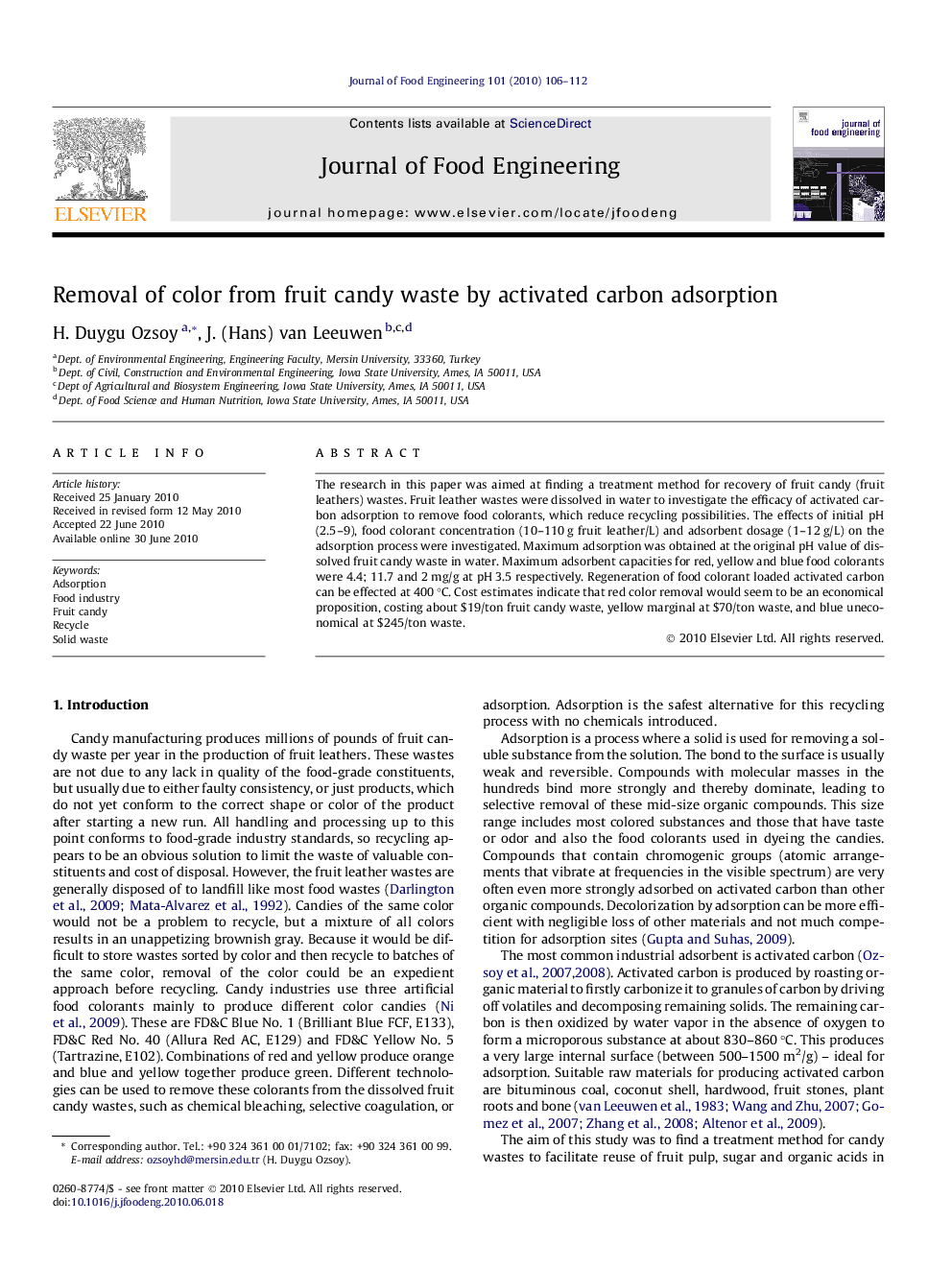| Article ID | Journal | Published Year | Pages | File Type |
|---|---|---|---|---|
| 224211 | Journal of Food Engineering | 2010 | 7 Pages |
The research in this paper was aimed at finding a treatment method for recovery of fruit candy (fruit leathers) wastes. Fruit leather wastes were dissolved in water to investigate the efficacy of activated carbon adsorption to remove food colorants, which reduce recycling possibilities. The effects of initial pH (2.5–9), food colorant concentration (10–110 g fruit leather/L) and adsorbent dosage (1–12 g/L) on the adsorption process were investigated. Maximum adsorption was obtained at the original pH value of dissolved fruit candy waste in water. Maximum adsorbent capacities for red, yellow and blue food colorants were 4.4; 11.7 and 2 mg/g at pH 3.5 respectively. Regeneration of food colorant loaded activated carbon can be effected at 400 °C. Cost estimates indicate that red color removal would seem to be an economical proposition, costing about $19/ton fruit candy waste, yellow marginal at $70/ton waste, and blue uneconomical at $245/ton waste.
